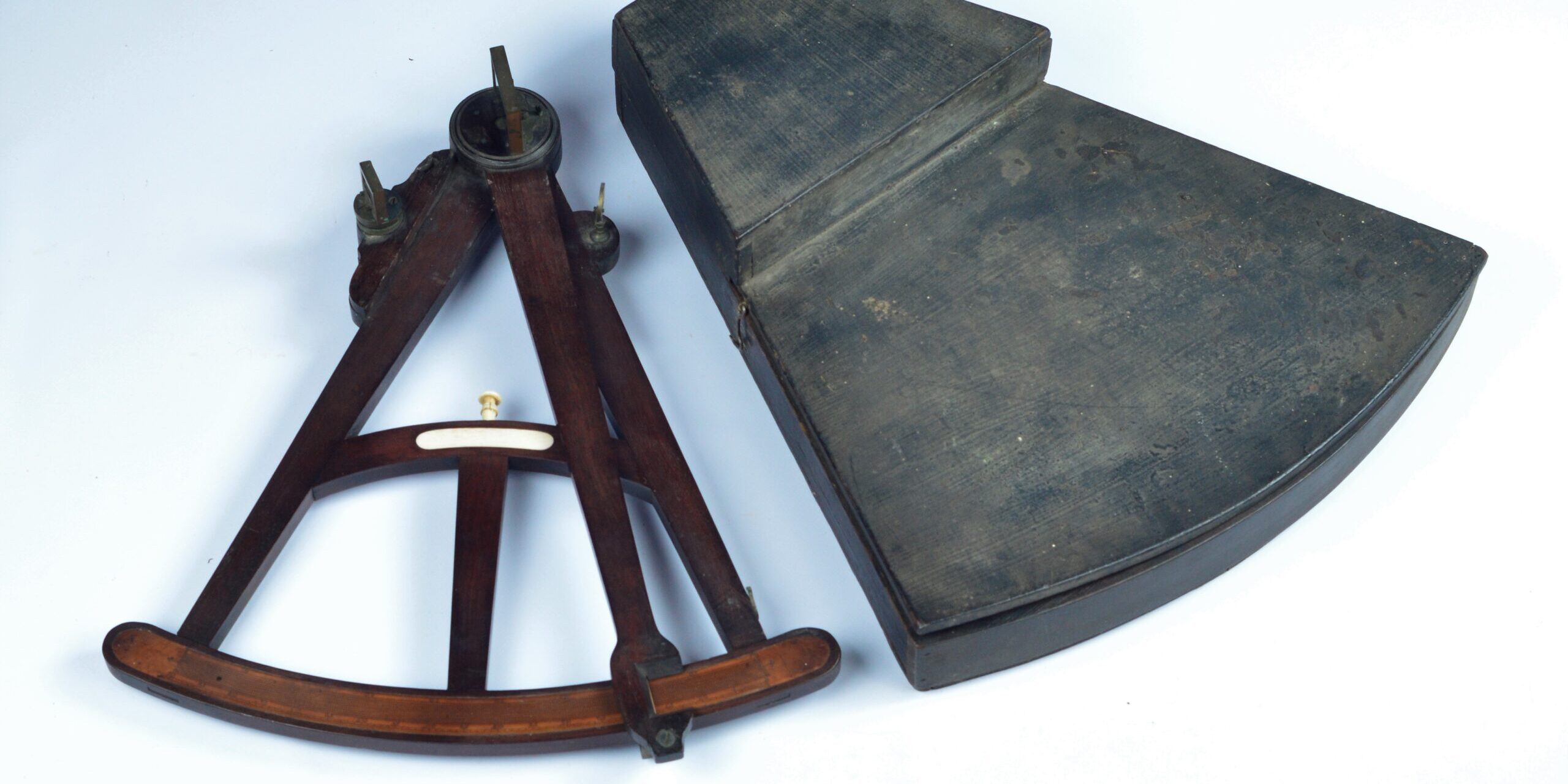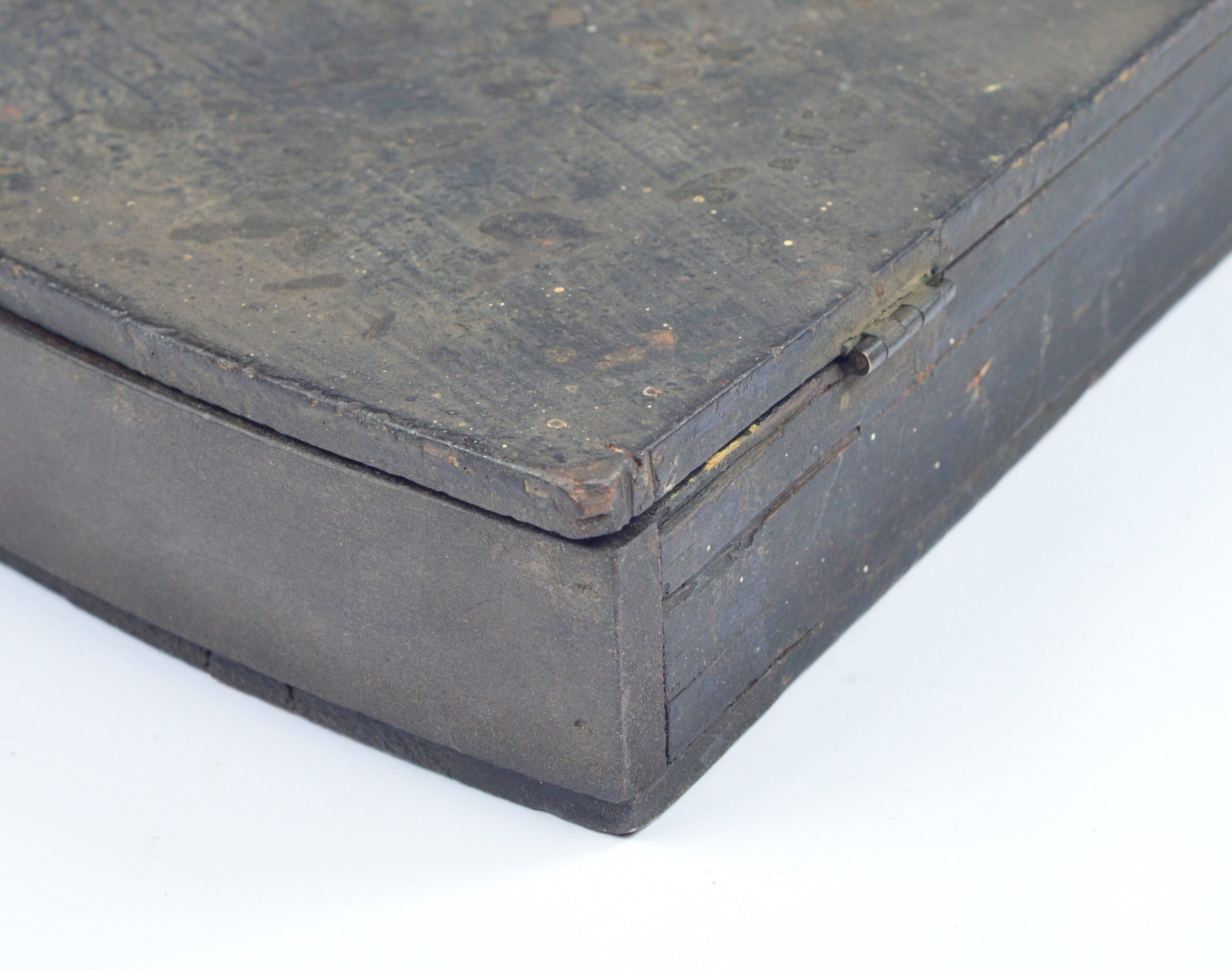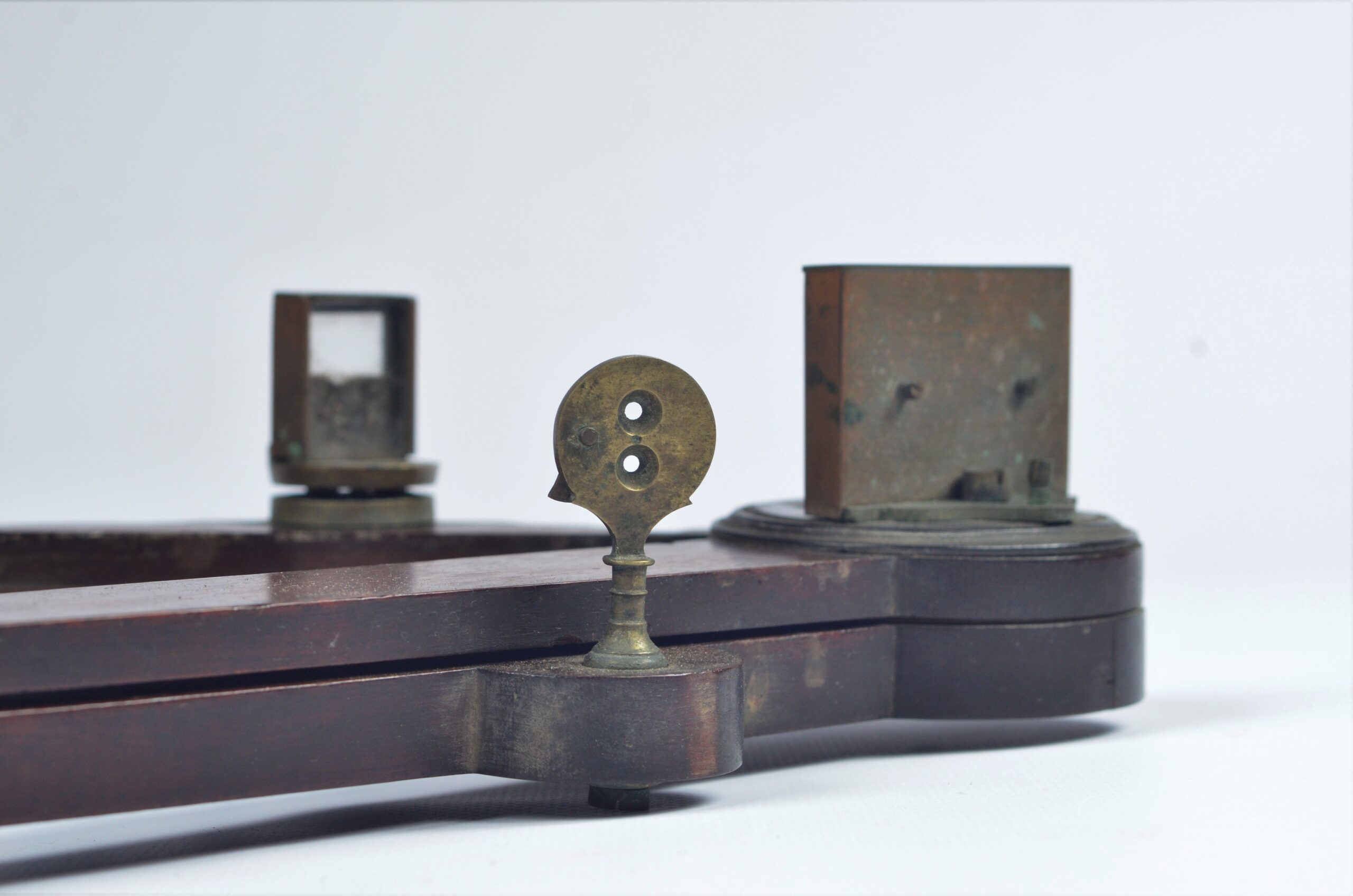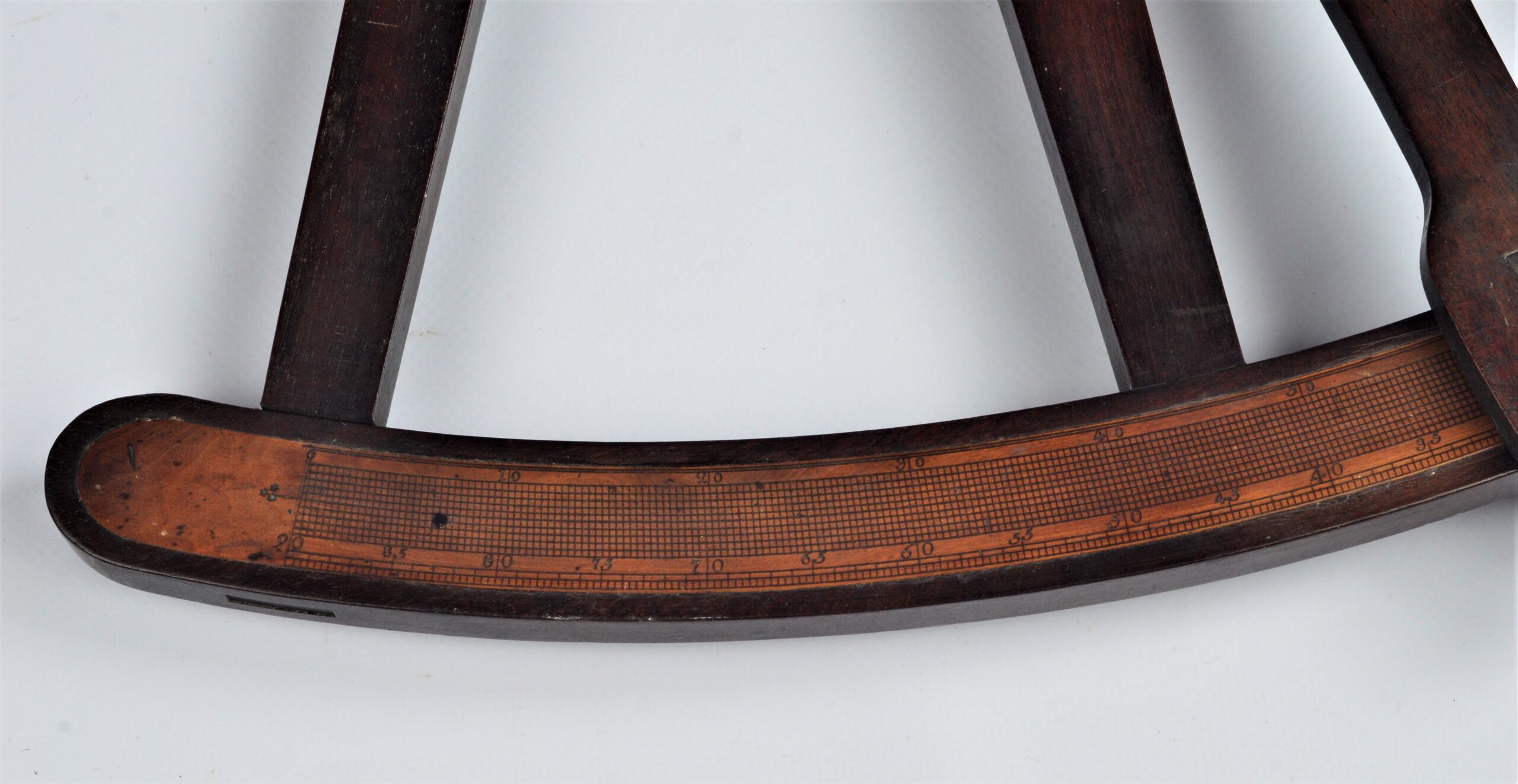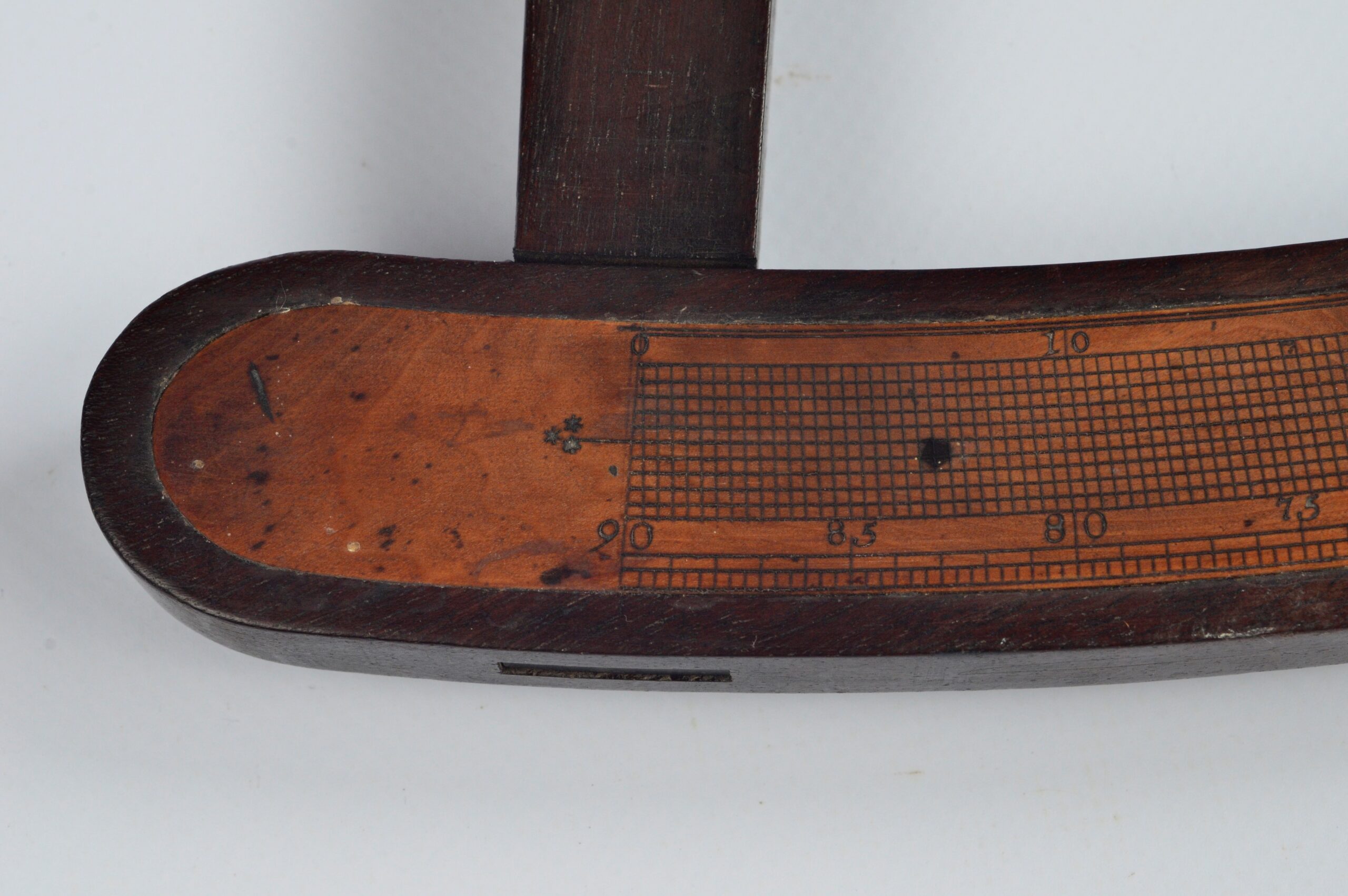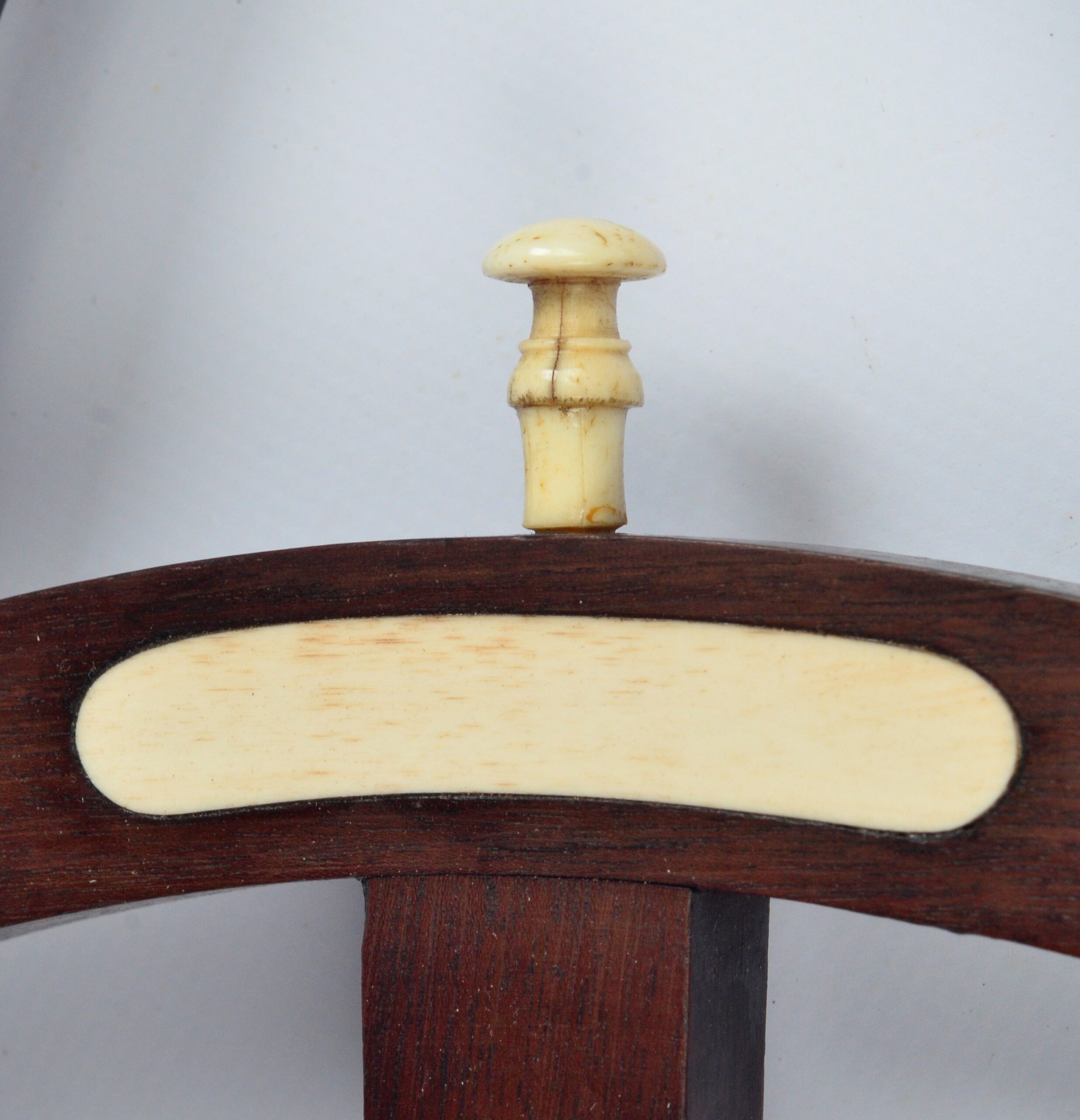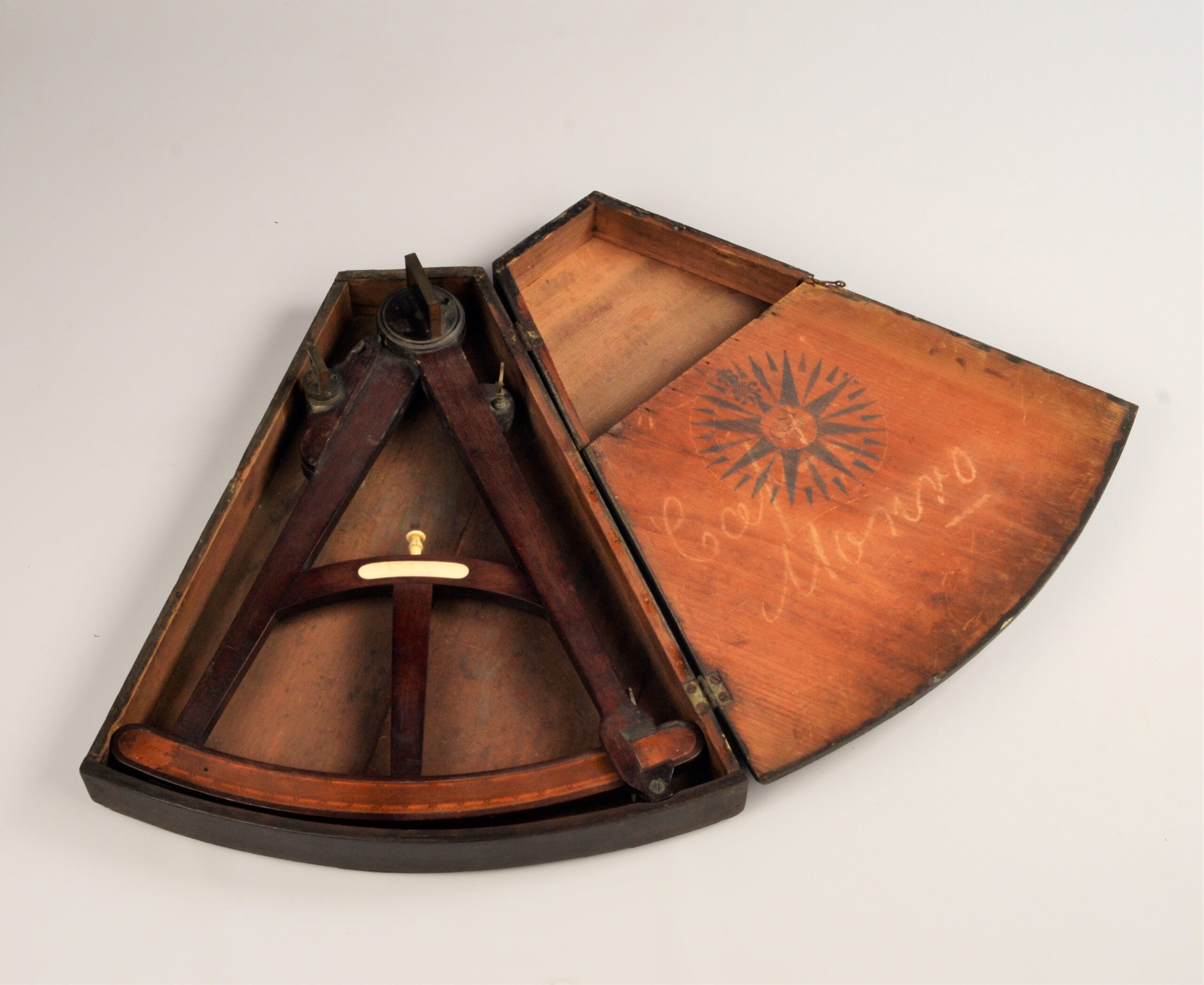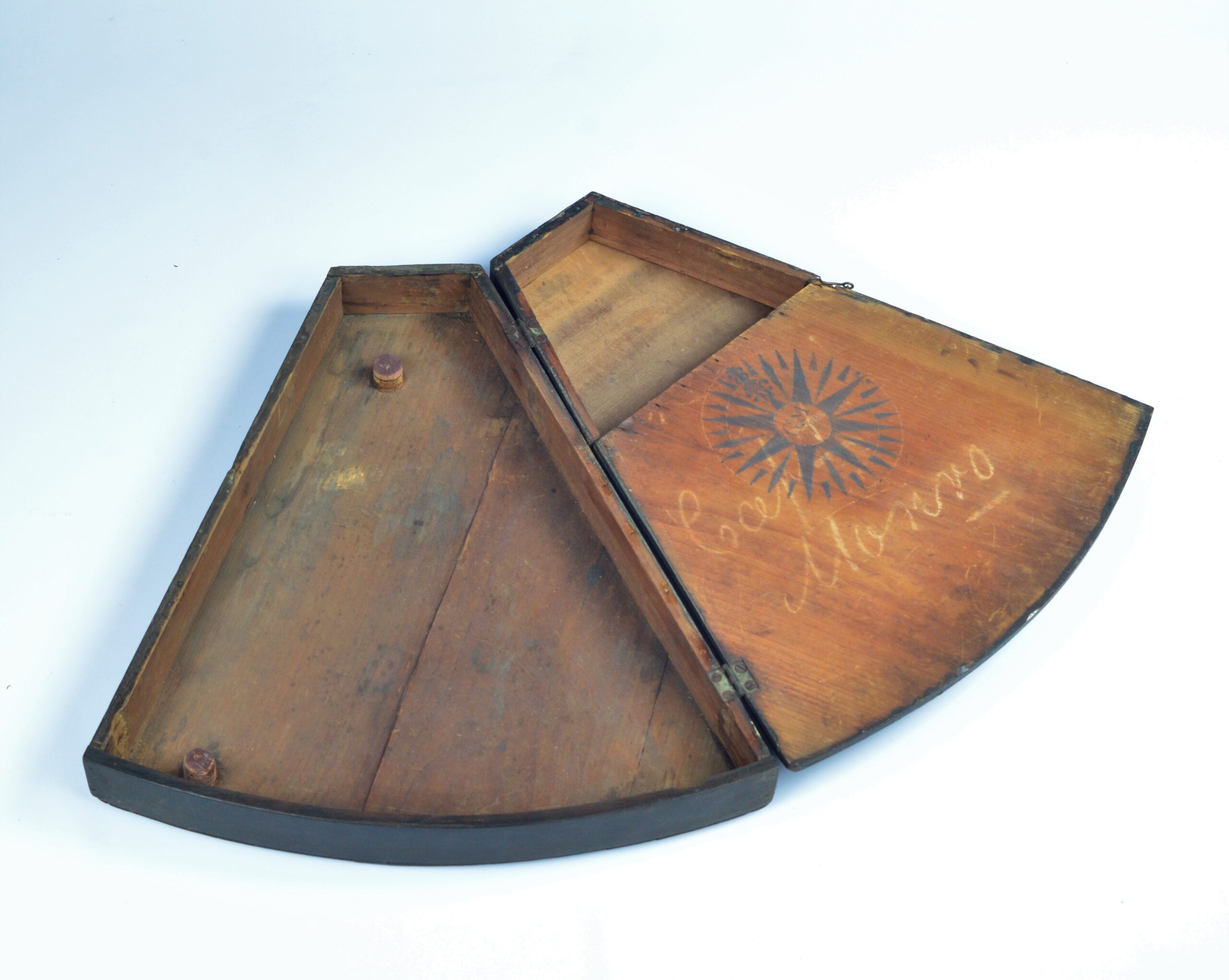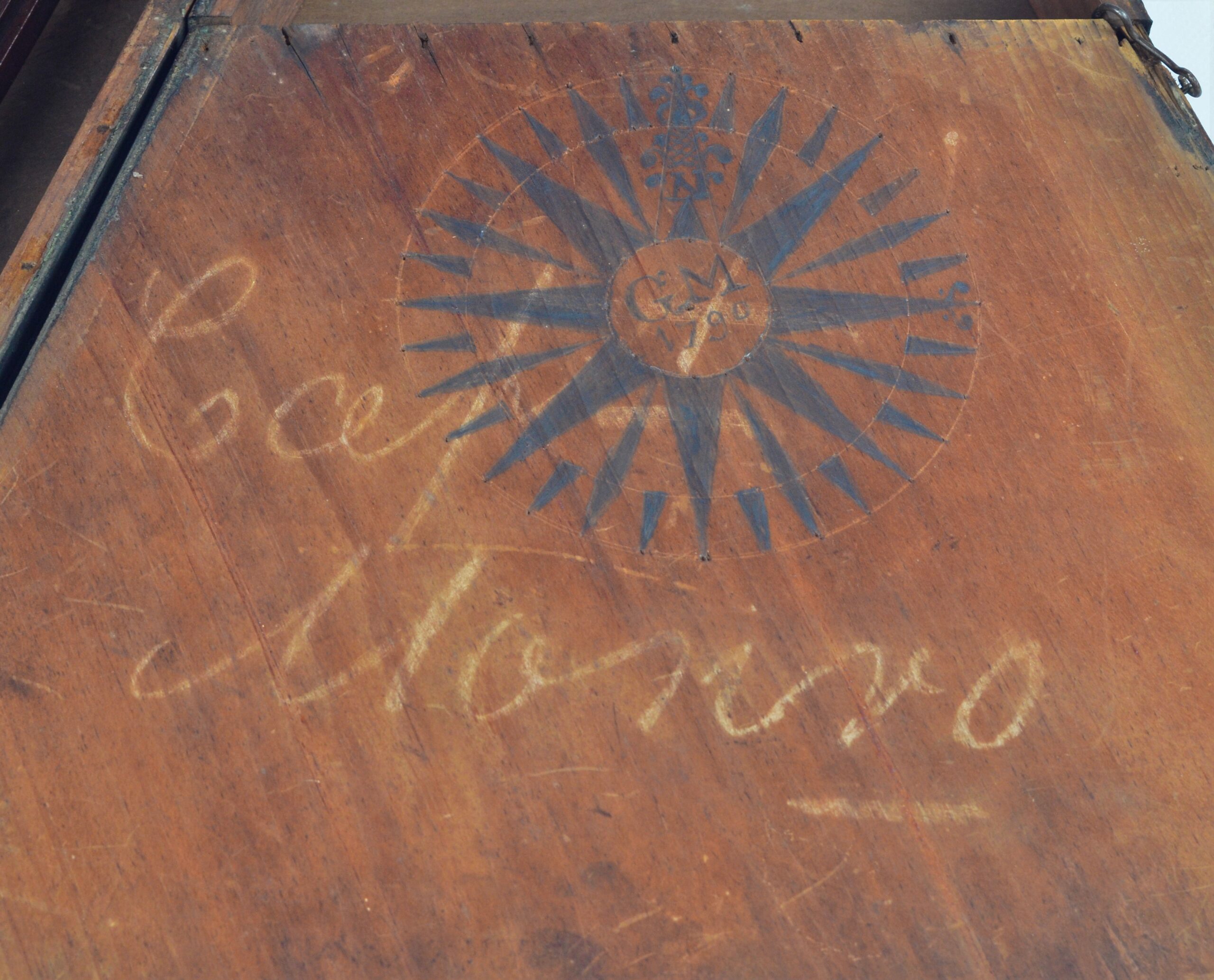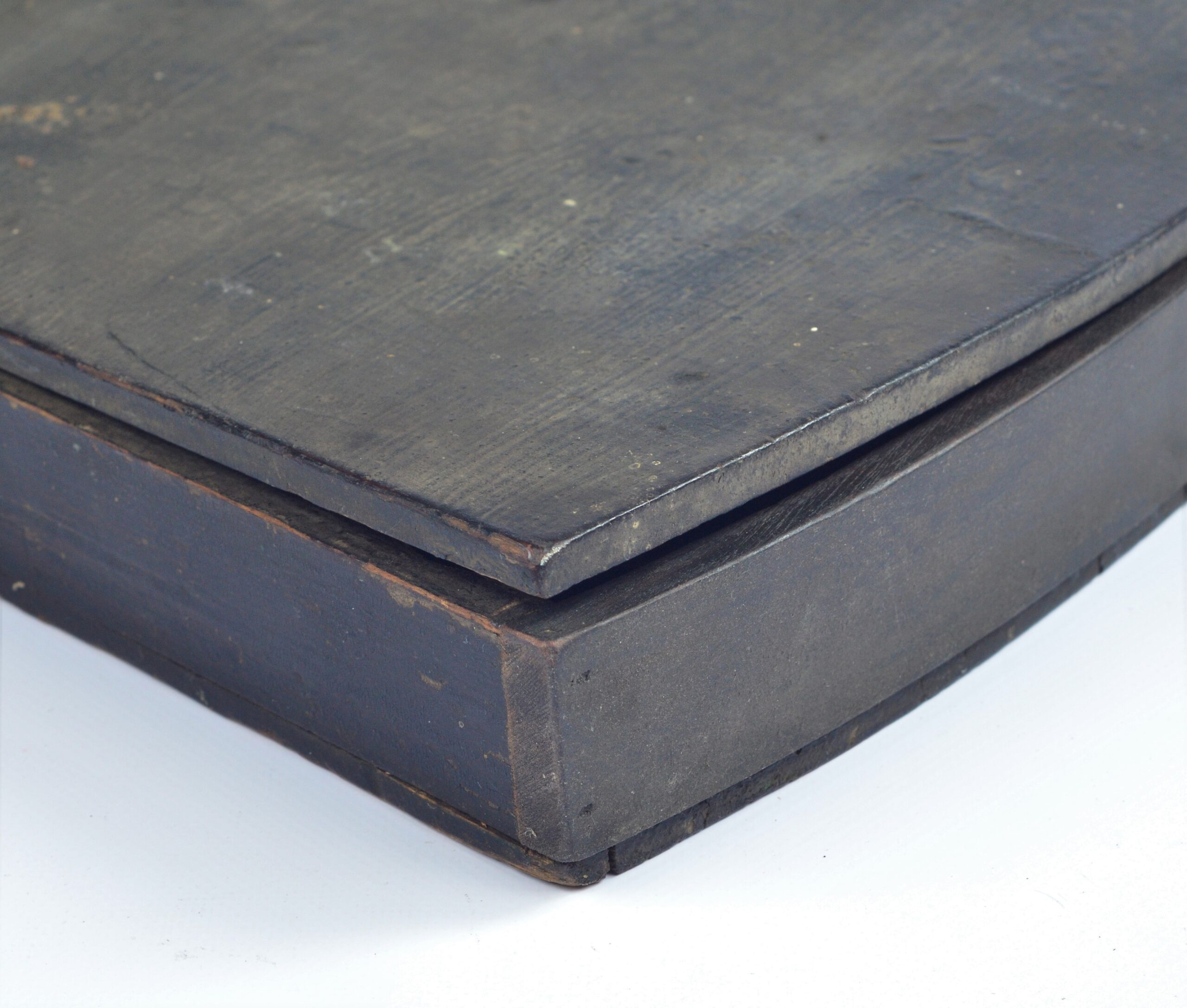
16-inch Hadley’s Quadrant (octant) – ca. 1740, England or North America
The first octant was created by John Headly in 1731. In Great-Britain and North-America it was called the Hadley’s quadrant to distinguish it from the Davis Quadrant. The early octants of Hadley are provided with a transversal nonius, like the Davis Quadrant. Headly got in 1734 a patent for eleven years. Immediately after it came to an end other instrumentmakers started with making octants. They are all equipped with a Vernier nonius, invented by the Frenchman Vernier.
This instrument is made of very fine Cuba mahogany and dates around 1734 -1745. Octants like this one with transversal nonius are mostly from John Hadley. The transversal scale is made of palm wood. The scale can be read very accurately by means of an ivory insert in the alhidade. In the graduation every degree is divided in parts of 20 minutes. The nonius is divided in ten equal parts, so the accuracy of reading with the transversal nonius is two minutes. Remarkable detail: the vernier has a scale for backward observations, but no third mirror that makes that possible. On the left leg for a number of days probably the height values of a star (Afnil?) are displayed in pencil. The nameplate is made of ivory. The instrument does not have feet at the backside. Movable sunshades can easily fall overboard or get lost. Here they are missing.
The chest is largely made of cedar wood. The standing edge at the front was restored once. A compass rose is drawn in pencil in the lid with the initials G.M. and the year 1790.
Catalog: NM.4-45
Date: ca. 1730-1745
HWL case: 9,2x42z47 cm (3.6×16.5×18.5 in)
HW instrument: 46×38 cm (18.1×15 in)
Radius (rotation axis till nonius): 38,2 cm (15 in)
Signed in case: G.M. 1790 in a compass rose and Capt. Monro with chalk
Origin: England or North America, possibly made by John Hadley
Condition: very well for its age with some general signs of use and wear
